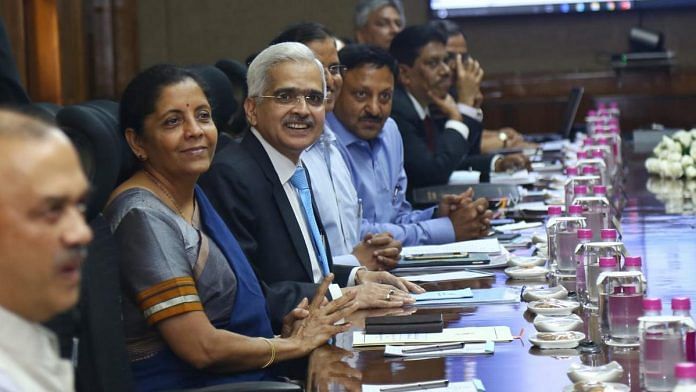New Delhi: Policy rate cuts announced by the Reserve Bank of India (RBI) reach the final customer in 2-3 months now rather than the six months it used to take before, RBI governor Shaktikanta Das said Monday.
He was responding to queries in a post-Budget press conference with Finance Minister Nirmala Sitharaman.
Beginning February this year, the RBI has cut key policy rates by 75 basis points, helped by a benign inflation of 2-3 per cent. However, banks, constrained by high deposit rates, have reduced lending rates by only 10-15 basis points.
Though banks have been nudged by the government and the RBI to pass on the lower interest rates, the lenders have cited the higher small-savings rates, which render their deposit rates uncompetitive, to explain their inability to do so.
Das said the government was in the process of collecting data about transmission after its 25-basis-point rate cut in the June monetary policy, where it had cited the weakening in growth impulses to justify a rate cut.
A lower interest cycle will be key to kickstarting private investment activity in the economy and boost growth, which fell to a five-year low of 5.8 per cent in the March-ended quarter of 2018-19.
Lower interest rates will also help spur consumption by boosting demand.
Also read: Nirmala Sitharaman’s budget puts the ball back in RBI’s court to spur growth
The Indian economy slowed for the second consecutive year to 6.8 per cent in 2018-19 from 7.2 per cent in 2017-18 and 8.2 per cent in 2016-17.
Das, when asked about the inflationary impact of the Budget given the excise duty and cess hike on petrol and diesel, said the price increase will take time to translate to higher inflation. He, however, added that there will only be a marginal increase in inflation due to the Budget announcements.
Pat for lower deficit target
He also welcomed the government’s decision to lower the fiscal deficit projections to 3.3 per cent of gross domestic product, and sticking to the path of reducing its fiscal deficit to 3 per cent of GDP by 2020-21.
“RBI will always be happy (when the government is fiscally prudent) because it limits the crowding-out effect for private investment,” he said.
A higher fiscal deficit forces the government to borrow more and consequently increases interest rates, making it unviable for the private sector to borrow.
He also said the Rs 70,000 crore capitalisation plan announced for state-run banks in the Budget will help them meet regulatory capital requirements while increasing their lending to different sectors of the economy.
Also read: Modi govt’s hike in duties on petrol & diesel unlikely to stop RBI from cutting rates






